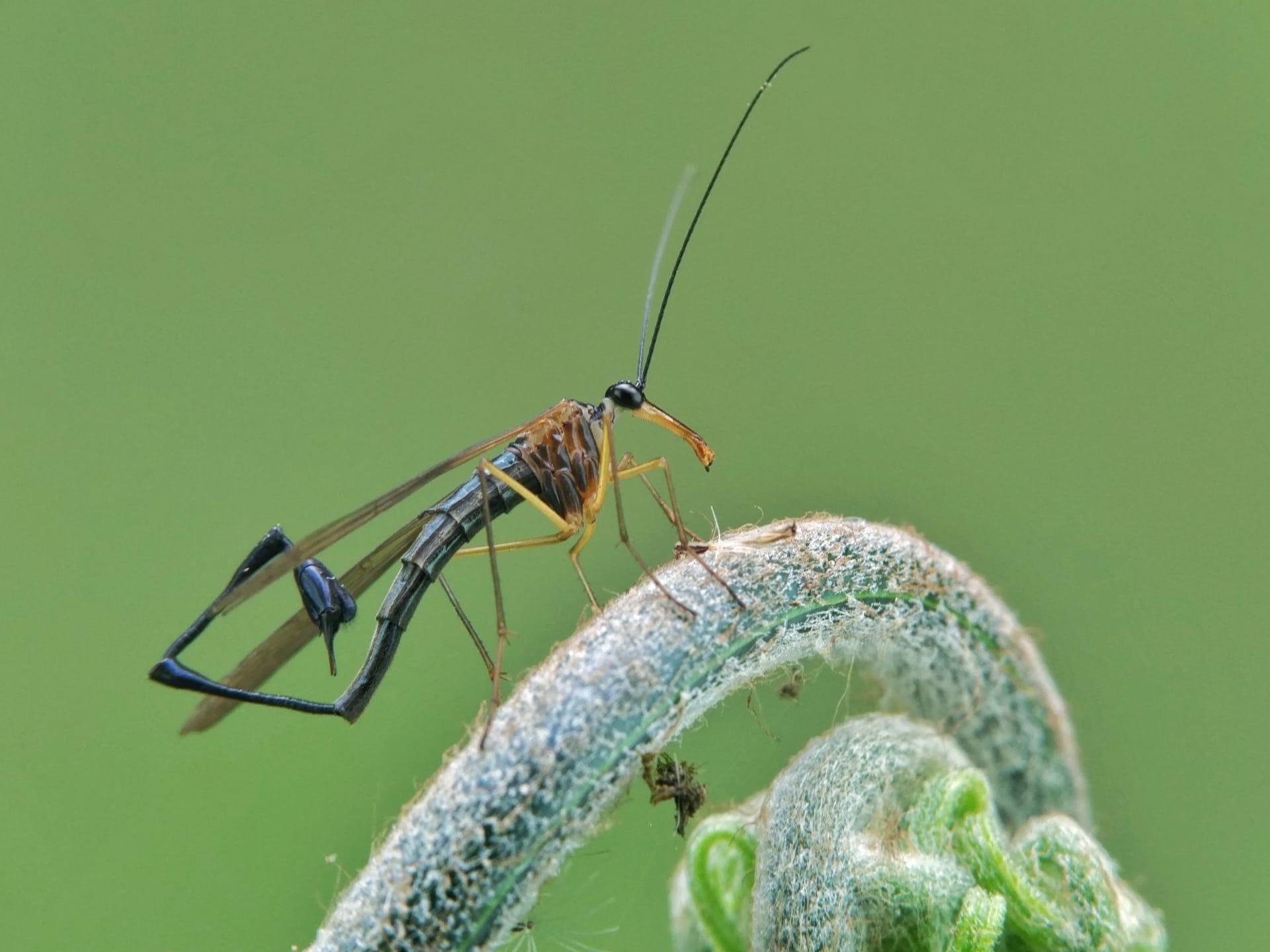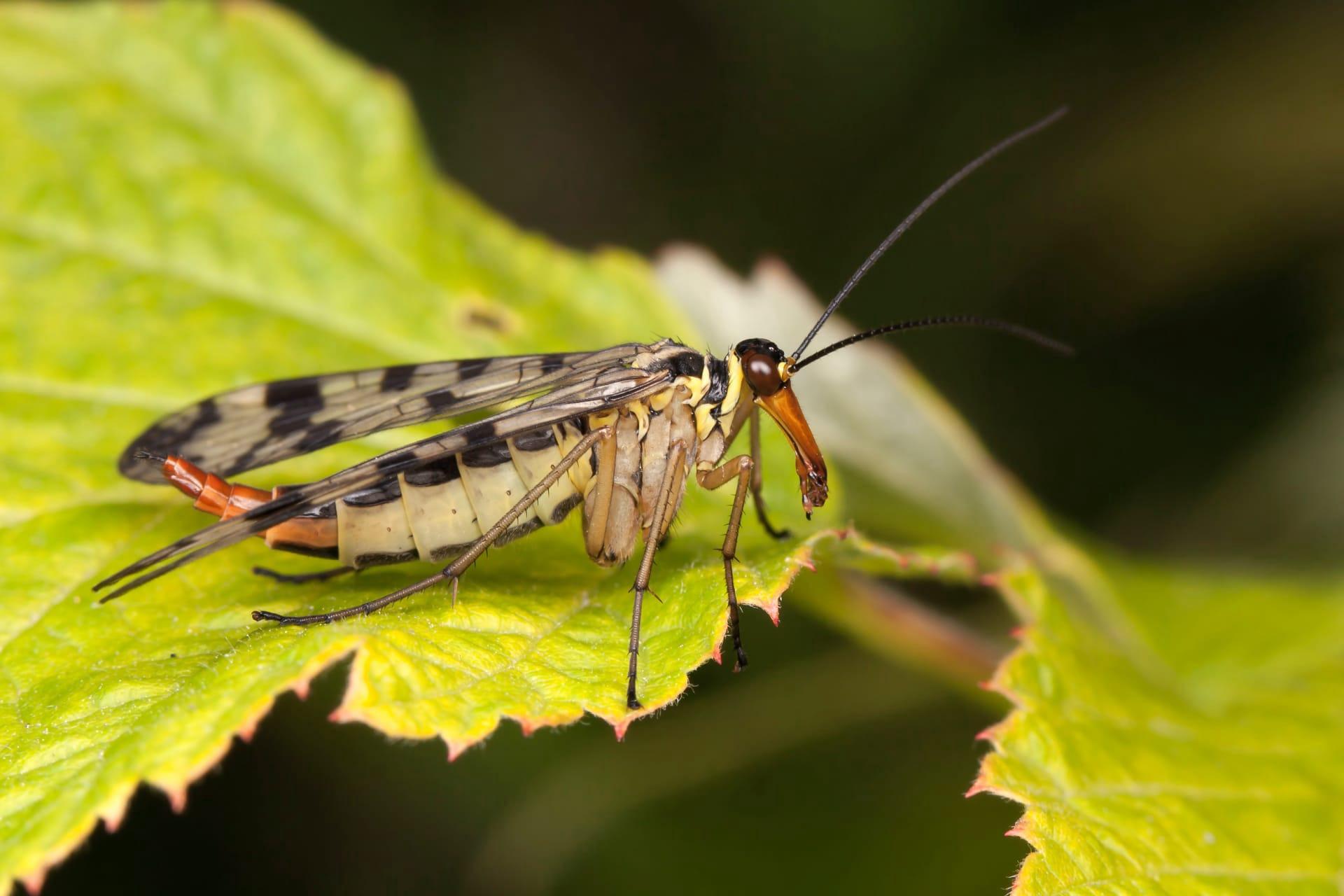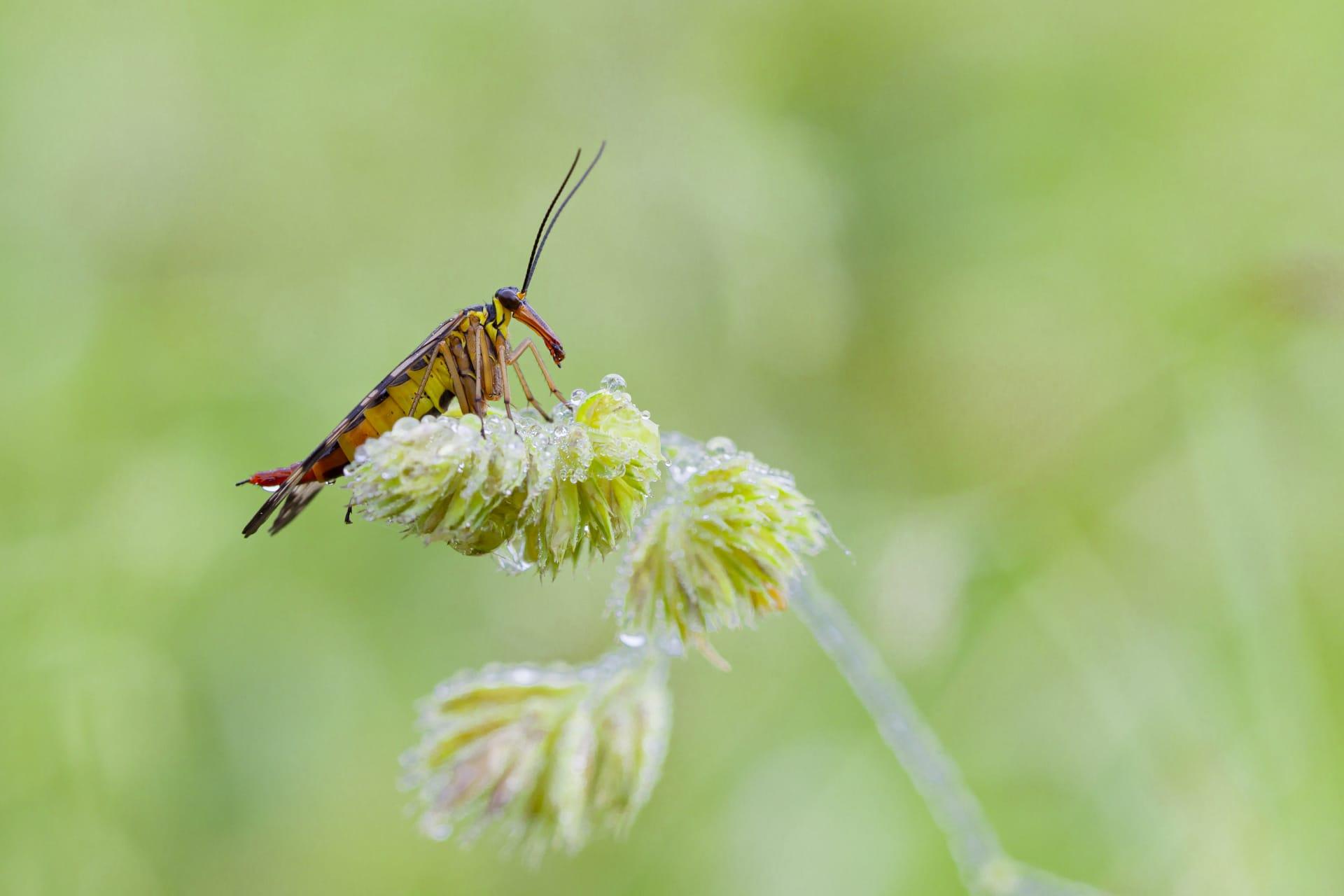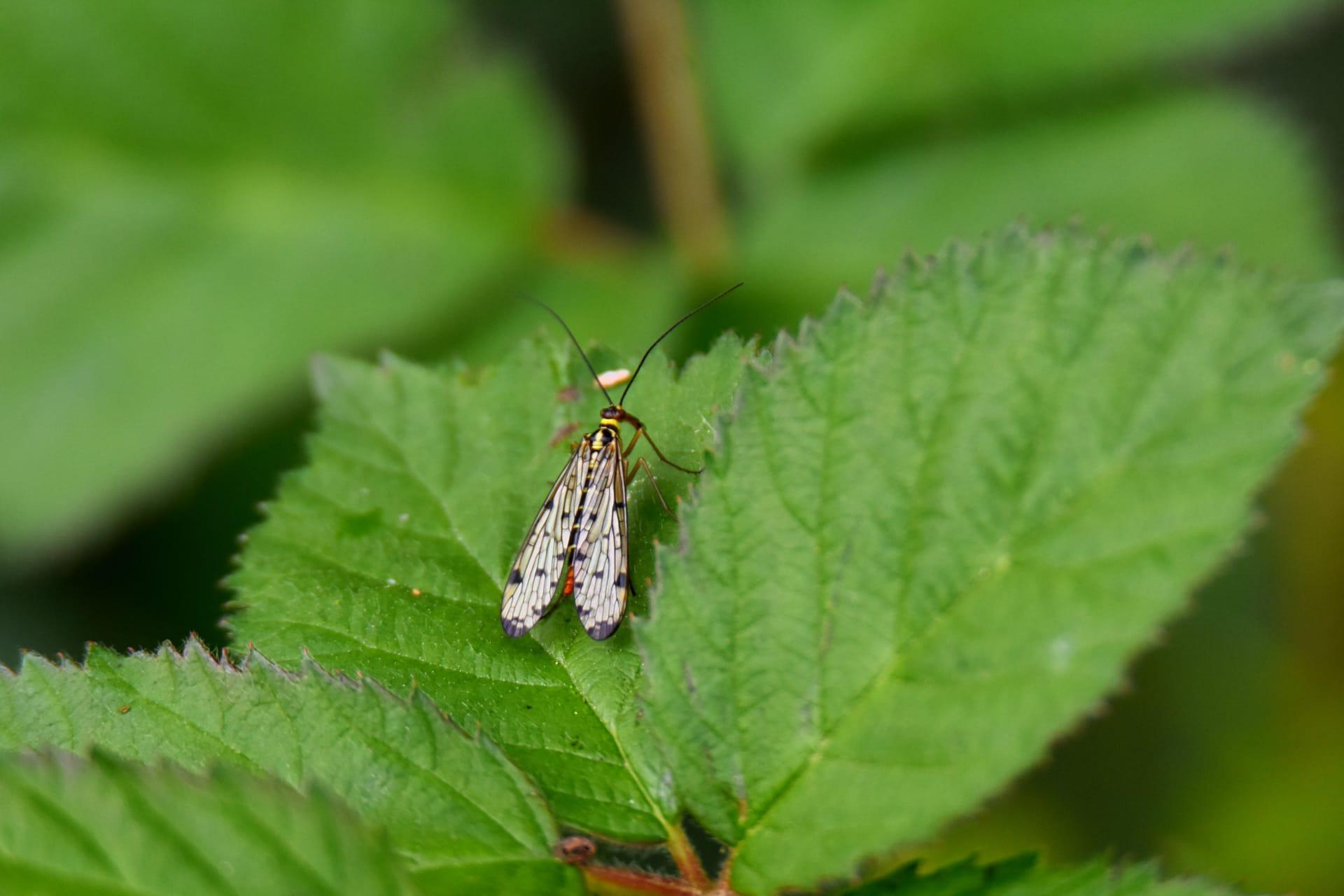1
Scorpion flies, belonging to the order Mecoptera, have a unique and distinguishing feature: the males of some species have enlarged genitals that resemble a scorpion's stinger. But worry not, these are not for stinging! This bizarre structure is actually used during mating. It's fascinating to note that these "scorpion tails" are not harmful to humans or other creatures.
Another interesting fact about these insects is their diet. Scorpion flies are scavengers and often feed on dead insects, which they can detect from a considerable distance. They also have a penchant for rotting fruit and occasionally prey on live insects. This diet reflects their role in the ecosystem as nature's cleanup crew, helping to recycle nutrients back into the environment.

2
When it comes to mating, scorpion flies have an unusual approach. The males often present a gift to the females, typically in the form of prey or a saliva secretion. This nuptial gift plays a crucial role in the mating process, with larger and more impressive offerings increasing the male's chances of successful mating. This practice not only reflects their unique courtship behavior but also underscores the importance of resource acquisition in their life cycle.
Scorpion flies are also known for their impressive navigational abilities. They have excellent eyesight and can maneuver through dense vegetation with agility. This is essential for their survival as they often inhabit forested areas and meadows, where they need to swiftly avoid predators and locate food sources. Their wing structure and sensory capabilities are perfectly adapted for this environment, making them expert flyers in their natural habitat.

3
Did you know that scorpion flies are ancient creatures? They date back to the Mesozoic era, over 250 million years ago, making them contemporaries of dinosaurs. This longevity speaks volumes about their adaptability and resilience. Fossils of scorpion flies have been found in various parts of the world, providing crucial insights into their evolution and the environmental changes they have witnessed over millennia.
Interestingly, the larvae of scorpion flies resemble caterpillars and undergo a complete metamorphosis. They typically live in soil or under tree bark and feed on decaying vegetation and organic matter. This larval stage, which can last for several months, is critical for their development. During this time, they undergo significant transformations, preparing them for their adult life where their role in the ecosystem becomes even more pronounced.

4
Scorpion flies exhibit a fascinating defense mechanism. When threatened, they can emit a foul-smelling substance to deter predators. This chemical defense is quite effective, especially against small predators like spiders and frogs. It's a classic example of how these creatures have developed unique survival strategies in the wild.
Another captivating aspect of scorpion flies is their wing patterns. Many species have distinctive markings on their wings, which are not just for show. These patterns play a vital role in communication, especially during mating rituals. The wings are used to display fitness and attractiveness to potential mates, adding an intriguing visual element to their complex mating behaviors.

5
Scorpion flies have a unique reproductive anatomy. The male's reproductive organ is not only used for mating but also functions as a clasper to hold onto the female during copulation. This adaptation ensures a secure and effective mating process, crucial for the continuation of their species.
Scorpion flies are indicators of environmental health. Because they are sensitive to pollution and habitat changes, their presence or absence can signal the health of an ecosystem. Scientists often study scorpion fly populations to assess the impact of environmental changes, making these insects not just fascinating but also valuable indicators in ecological research.